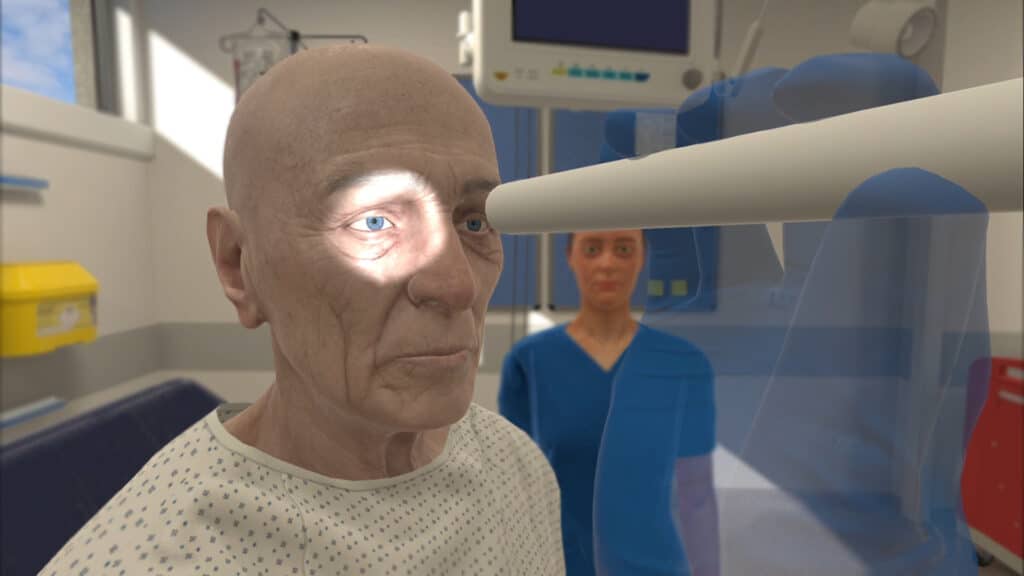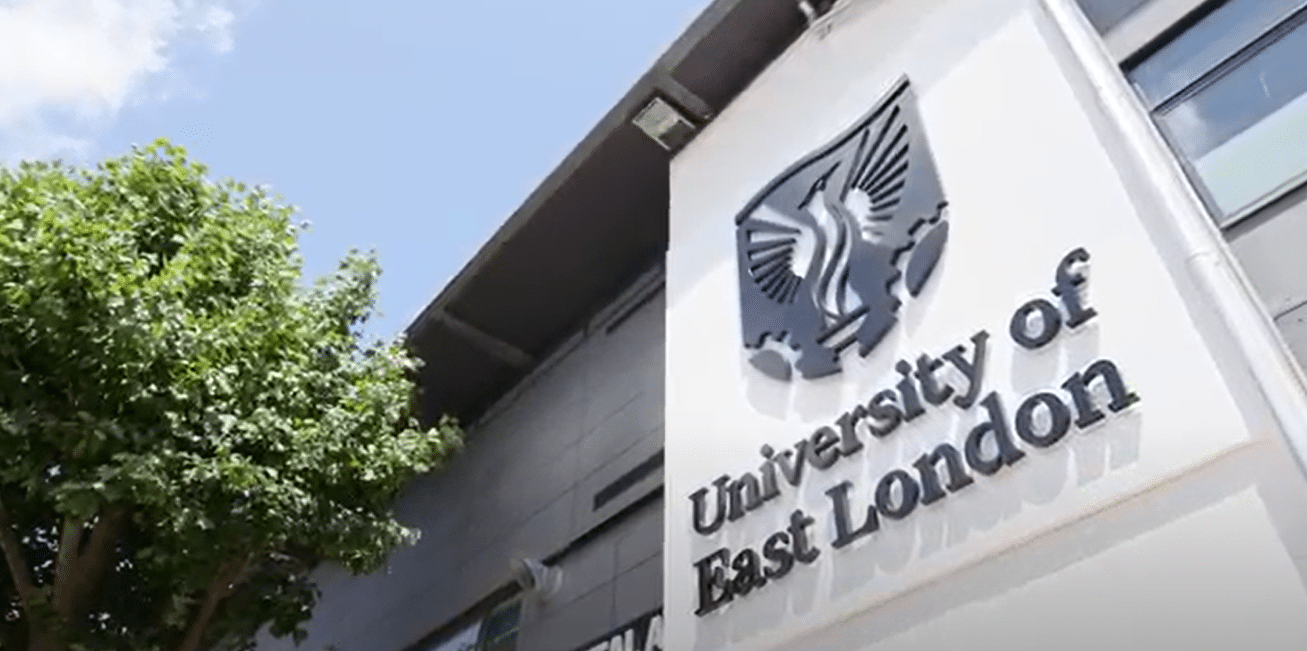Chartering the change
In 2021, the team at the University of East London began an undertaking to overhaul their simulation resources, leveraging the use of new technologies to set a course for the future of the curriculum.
In part, this was due to the mindset of the forward-thinking team, as Robert Waterson, Dean of the School of Health, Sport & Bioscience, noted:
“We have a view of using technology to move us forward.”
At a time when physical clinical placements could be limited, the use of technology to bridge the gap and provide experiential learning opportunities allowed for another means for students to practice clinical skills prior to taking care of patients.
With this in mind, the team at UEL sought a VR partner with expertise to help them prepare their students for future clinical placements while building the foundation for the future curriculum.
Building the foundation
After searching for the right VR partner, the team at UEL chose to move forward with OMS due to the platform’s accessibility, flexibility, and ease of use.
One key feature that Dean Robert Waterson highlighted is the accessibility of OMS:
“The fact that [OMS] has both on-screen and VR headset, for us, was really a game changer for the future.”
The team at University of East London worked to determine the best route for embedding virtual reality into the nursing curriculum, with guidance from the expertise of OMS Educational Specialists to determine which scenarios to use and how best to incorporate them into the curriculum.
After their initial work, the team at UEL developed their plan for use of OMS in their 3-year BSc nursing program, running alongside modules with concepts including clinical reasoning, anatomy and physiology, and communication.
These scenarios are also being used as a starting point to help prepare students for clinical placements and as a recruitment tool to showcase prospective students the immersive learning they can expect from the nursing program.
As Elaine Gervaise, Clinical Lecturer, said of the use of VR in the nursing program:
“Oxford Medical Simulation is a system that is so relevant in today’s nursing role.”
The impactful nature of the introduction of VR to the curriculum has not only been noted by prospective learners, but it’s also been felt by both students and faculty alike.
Seeing the impact
Building clinical skills
For students preparing for clinical placements, the need to build technical knowledge, practice procedural skills, and maintain open communication – then put it all together for real patient interactions – can be a momentous task requiring time, effort, and significant practice.
At UEL, students have felt the impact of the opportunity to provide patient care using virtual reality.
The ability to run through skills like taking an assessment or reading and interpreting reports is just one way students are able to prepare for all that’s required of them during clinical placements.
Learning the nursing role
In the OMS scenarios, students are able to interact with other members of the interdisciplinary team, giving insight into the role they will take on in practice and how they can work collaboratively with other healthcare professionals.
The ability to take on the role of the decision maker provides a unique opportunity for students preparing for clinical practice, as they’re able to conduct care without supervision and learn what it means to be in the position to provide direct patient care.
When you’re making decisions about medications or treatment plans and “your pin number is on the line”, as Dean Waterson notes, it can give students a big-picture insight into what it means to be a nurse in practice.
While that may feel like a big task to take on, it’s all conducted in a safe environment where mistakes can be made, reflected on, and learned from, as Clinical Lecturer, Elaine Gervaise, notes:
“Learners enjoy VR & OMS because it…builds up their confidence. It allows them to make mistakes where they can learn from them – in a safe environment.”
Engaging in simulation at home
Because of the accessibility and flexibility of OMS, students can engage in that deliberate practice and reflective thinking at home, as well. Data have shown that students at UEL are logging in more at home than they are on campus, bringing the skills and knowledge they learn with them back to the classroom.
Faculty have noticed the level of high engagement from students, as well. Senior Lecturer in Nursing & Nursing Practice Lead, Kelly Ncube, said of how students in her experiences have used OMS:
“[Students] are so immersed in these scenarios…They are highly engaged, and they want to continue learning more and more.”
Applying knowledge to practice
Not only have faculty seen excitement and engagement from students, but they’ve also reported improvements in skills following use of the VR scenarios.
In a 2-day simulation process, students spend time on the first day practicing on virtual patients in on-screen simulations. On the second day, students run OMS scenarios, participating and facilitating their own simulations with faculty present, as well.
Students ‘are much better [in physical simulation] when they start with OMS’ according to faculty present during these simulation days, noticing improvements in communication skills and an ability to reference processes done on Day 1 that align with what they’re doing on Day 2.
Students and faculty alike have seen the benefits of embedding virtual reality into the nursing curriculum and are looking forward to what’s ahead as the use of VR continues to evolve and grow for the team at UEL.

The road ahead...
Since incorporating virtual reality into the nursing program, the team at UEL have seen such positive results that faculty from other departments are working on embedding VR into their curricula, as well.
At this stage, all courses are integrating VR technology into the curriculum, including physiotherapy, occupational therapy, physician assistant, podiatry, and midwifery courses.
Clinical Lecturer, Elaine Gervaise, said of the excitement around using OMS:
“OMS is a company that can take us forward.”
The team at UEL are looking ahead and continuing to innovate and push forward the way they teach and engage their students in order to prepare them for practice.
To learn more about curriculum mapping and implementation, book a demo to speak with us in more detail.

